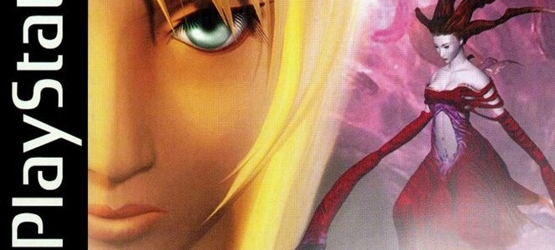PlayStation Classics Corner is a new series on PSLS dedicated to modern reviews of PlayStation Classics released on PSN.
In 1997, the game Final Fantasy 7 released to critical acclaim and millions of units in sales, solidifying the PlayStation as the console for JRPGs. Only a year later, Squaresoft launched a new RPG sub-genre they dubbed ‘the cinematic RPG’. The game was a two-disc horror-themed RPG called Parasite Eve, debuting first on the PlayStation in 1998 and later as a PS1 Classic in late 2011. It was developed in part by Squaresoft’s own studios, but a good portion of the game was actually developed by teams in the USA.
Parasite Eve is a sequel to a 1995 novel with the same title, but no knowledge of the book is necessary before playing, as the game explains all the necessary backstory. The star of the show is Aya Brea, a 25 year old New York police officer, and the story begins with her attending an opera on Christmas Eve, 1997. Crazy stuff soon follows with the lead singer, Melissa Pearce, causing the audience to spontaneously combust en masse. Luckily our hero Aya is immune to Melissa’s powers, but this is only the start of a journey that will take her throughout New York.
The game is an absolute failure at horror, but that wasn’t Squaresoft’s intention: this is a JRPG, first and foremost. Gameplay works like an amalgamation of a standard Final Fantasy game and an action title, combining the standard Active Time Battle system with a few new elements. Combat begins when walking through certain areas, when activated blocking off a segment of the map as a sort of battleground. When combat begins, the ATB meter starts to fill up and players can dodge enemy attacks, shoot their opponents or use Parasite Energy moves, the game’s “magic” system, to heal themselves, add or remove status effects or attack their foes.
There’s a large variety of guns in the game, from pistols to shotguns to assault rifles and even rocket launchers. Ammo in the game is plentiful, and players can customize and upgrade their weapons through the use of Tools and Super Tools. The hoarding of weapons is rewarded (you’d think the game takes place in Texas), as most weapons come with attack, range or ammo modifiers that can be transferred through the Tools system. Most weapons only come with one or two points allocated to any of its modifiers, but they add up when transferred onto one primary gun. Along with points, weapons come with slots for attachments that allow you to fire explosive bullets, spread your shot like a shotgun, increase the number of times Aya can fire per turn, automatically use potions whenever critically wounded… overall there are dozens of useful attachments to choose from and the same system applies to armor. It’s a pretty deep system that’s easy to grasp, but one can finish most of the main story without ever fully understanding the mechanics. Thankfully there’s a long and difficult bonus dungeon set in the Chrysler Building ready to reward any players who put the time into crafting great guns and armor.
When Aya levels up, her stats (attack, defense, PE points, etc) increase and she’s given bonus points that can be used to upgrade the number of items she can carry, the speed of her ATB meter recharge or the modifier points of her weapons and armor. This sounds helpful, but by the end of the game I had never upgraded anything but Aya’s carriable items limit. The ATB meter never seemed too slow and I put much more value into the size of her purse than slightly boosting the stats of her weapons. Still, when maxing out the stats of a weapon for side missions is key, I can see the system having some merit.

The game is only around 12-14 hours long, with a good portion of the time spent watching the story unfold through dialog, in-engine cutscenes and some of the most impressive CG sequences – of which there are plenty – to grace the PlayStation. By RPG standards it’s a short game, but luckily it uses its time wisely, with a bunch of story packed in an easily-digestible form, with a new game plus mode and a few side missions for those interested in delving further into Parasite Eve‘s world. Sadly the story is a bit nonsense, with evil, sentient mitochondria being the villains, and a scientific implausibility put on display nearly every time the plot is moved forward. The character interaction is a bit stiff and the game sometimes feels a little too melodramatic, but the characters (Daniel and Maeda, in particular) grew on me by the end. The protagonist, Aya Brea, is a good example of a perfectly-executed attempt at a strong female protagonist, without any hint of nonsensical “girl power” silliness or out-of-place roughness forced by the writers to try to make her look strong (I’m looking at you, Lightning from FF13). The translation is lacking, with a good portion of the dialog feeling inorganic and a few grammatical or spelling errors peppered throughout, but the script contains a few classic lines I won’t soon forget (or spoil).
The character models seem a bit reminiscent of those in Final Fantasy 8, not in style or design (even if Tetsuya Nomura designed both games’ characters), but because it uses an engine developed alongside FF8‘s. Parasite Eve doesn’t quite push the PlayStation’s hardware to its limits, instead opting to give the pre-rendered backgrounds a great level of detail to nice effect. Unfortunately, even with a high level of detail, the environments themselves are a little on the bland side, as the game does take place in New York – one of the most common settings in video games, comics and movies. It’s a nice curio to see real-world environments like the Statue of Liberty rendered in what is essentially the FF8 engine, but that doesn’t take away from the fact that the game’s levels include boring settings like sewers, a police station, a park and a museum. Even worse, Aya moves slowly even when running so the levels sometimes feel like they drag on a bit. Loading times and control responsiveness are great, but, in analog mode, menus are only controllable with the analog stick; gamers will want to play in analog mode, otherwise they’ll have to hold down a button to run like in Final Fantasy 7. It’s easy to grow accustomed to, but there are distinct negatives with either control setting.
The game’s music is composed by Yoko Shimomura, who also handled the soundtracks for each notable Kingdom Hearts game, the Mario RPG games and Legend of Mana, and I’m happy to say that Parasite Eve contains one of her best soundtracks yet. It’s a mixture of electronic and opera and it sounds very different from anything else I’ve ever heard, it’s very distinct. The standard combat music may become repetitive after a while, but the environmental tracks are some of the best I’ve ever heard on any platform.
Parasite Eve‘s translation and story are a bit lacking, but the wonderful music, likable characters and top-notch cinematics more than make up for it. I can’t help but wish that Squaresoft had put more work into the translation and making the story feel a little more believable, but it absolutely delivers on its promise of a true cinematic RPG. Even with all flaws considered, it costs a mere $6 and only asks for 12 hours of your time. With all the wonderful content the game has to offer, I can’t help but highly recommend Parasite Eve to any RPG fan.
[Img]
-
Deep RPG mechanics
-
Lots of high-quality CG cutscenes
-
Some of Yoko Shimomura's best music ever
-
Side-missions, new game +, highly replayable
-
Silly story, iffy translation
-
Not even a little scary
-
Only around 12 hours long
-
Understanding RPG mechanics not totally necessary



